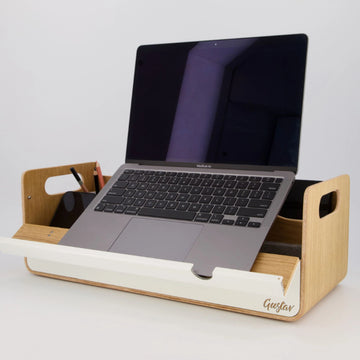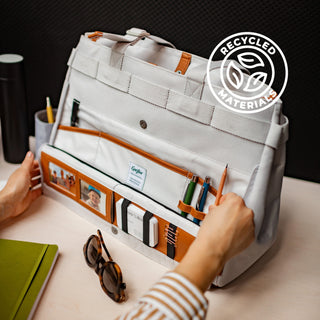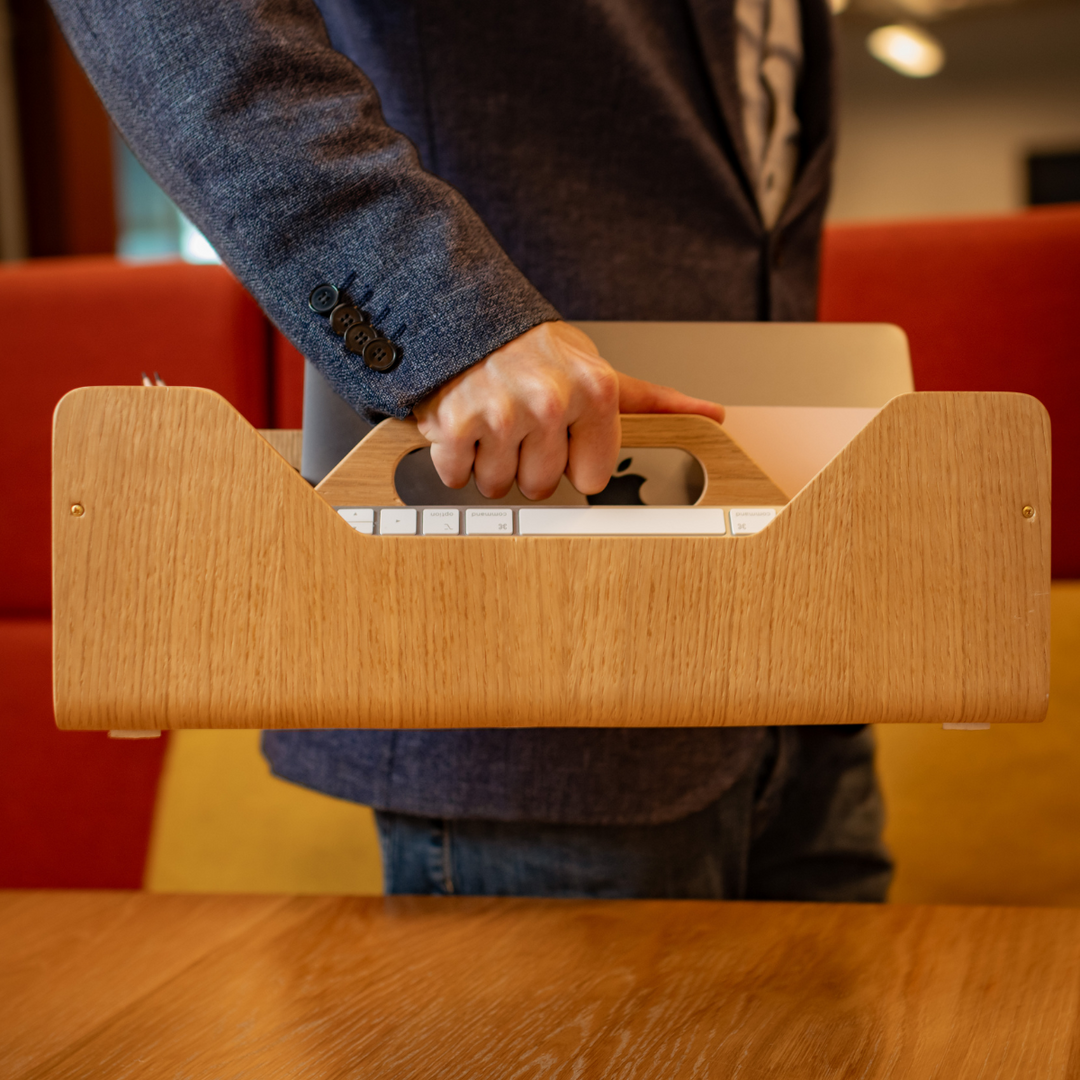Skrivbordsdilemmat: Hur man ökar medarbetarnas nöjdhet med skrivbordsdelning

I det ständigt föränderliga landskapet på den moderna arbetsplatsen är en aspekt som tyst förvandlas vårt förhållande till våra skrivbord. De dagar då ett skrivbord bara var en personlig fristad på kontoret är förbi. En färsk Morgan Stanley-undersökning avslöjar att ungefär hälften av kontoren i Storbritannien och ungefär en tredjedel av kontorsanställda i USA nu navigerar i vattnet av "hot desking", där konceptet med ett personligt skrivbord ersätts av ett mer gemensamt skrivbord. any-desk-goes tillvägagångssätt.

Ökningen av hot desking
Hot desking, en kostnadseffektiv strategi som är mer utbredd efter pandemin, innebär att anställda inte har tilldelade skrivbord utan snarare väljer från någon tillgänglig arbetsyta vid ankomsten. Även om den här modellen är ekonomiskt kunnig för företag, möter den inte universella applåder från arbetskraften. Det är som musikaliska stolar, men med skrivbord – och alla njuter inte av låten.
Anställdas känslor
Även om anpassningstakten ökar globalt, måste vi erkänna att inte alla arbetare är med på denna förändring, särskilt i början. Denna Oxford-Saïd BS-studie som visar sambandet mellan anställdas tillfredsställelse och produktivitet – det är en avgörande faktor för framgång. För vissa är förlusten av en dedikerad arbetsyta som att förlora en del av sin arbetsidentitet. Det är mer än bara ett skrivbord; det handlar om att ha en liten, personlig fristad i företagsvärlden. För andra är flexibiliteten och variationen som erbjuds av hot desking befriande, som att vara en nomad på kontorssavannen.
-
Balansera behov med en riktig arbetsplatsstrategi
Så, hur balanserar du dessa behov? Enligt vår erfarenhet tar de företag som är mest framgångsrika inte lätt på förändringen och har en genomtänkt och dedikerad arbetsplatsstrategi. En arbetsplatsstrategi är ryggraden i ett företags operativa etos, och harmoniserar det fysiska utrymmet med organisatoriska mål. Det är viktigt eftersom det definierar hur ett utrymme används för att öka produktiviteten, attrahera talanger och upprätthålla en konkurrensfördel. Denna strategi överskrider ren estetik; det formar medarbetarnas dagliga upplevelse, påverkar samarbete och stödjer välbefinnande.
-
Investera i rätt verktyg, möbler och tillbehör
Med hänsyn till känslan av personalisering investerar de flesta framgångsrika företag i verktyg som hjälper dem att få det nya systemet att fungera. Skrivbordsbokningssystem somDeskbird kan hjälpa till att organisera team och se till att alla som behöver kan sitta tillsammans som ett team. En annan spelväxlare i uppfattningen av hot desking har varit individualiserade skrivbordsarrangörer som Gustav , som gör det möjligt att förvandla vilket utrymme som helst till sitt personliga skrivbord, hålla kontorsredskap organiserade och arbeta ergonomiskt korrekt. Det gör det möjligt för människor att inse potentialen i en mobil arbetsyta, samtidigt som den tillåter personalisering – som tillgodoser individers känslomässiga behov.
-
Att balansera hybrida arbetsmodeller på rätt sätt
Många företag väljer ett universellt tillvägagångssätt för sin personal, genom att låta alla arbeta en viss tid, ofta 2-3 dagar i veckan, hemma och tvinga dem att komma tillbaka till kontoret för resten. Men ett mer balanserat sökande efter ett tillvägagångssätt växer fram genom hela arbetsplatsstrateger: att låta teamen välja sin arbetsstil. Detta tillvägagångssätt som diskuteras av Dr. Gleb Tsipursky erkänner att olika team har olika behov , och att maximera teamets potential genom att anpassa sin arbetsmiljö till sina uppgifter kan vara ett tillvägagångssätt att överväga. Till exempel kan ett digitalt team vilja engagera sig mer i slutet av varje tvåveckorssprint. Däremot ett kontohanteringsteam, som kräver mer stabilitet och konsekvens, särskilt mot slutet av månaden.
Genom att ge team självständighet att välja, kan företag tillgodose de olika kraven från deras arbetsstyrka, och säkerställa att allas jobbbehov tillgodoses på ett optimalt sätt. Detta tillvägagångssätt är ett avsteg från en policy som passar alla och går mot en mer nyanserad, medarbetarcentrerad arbetsplatsstrategi.
-
Walking the Talk: Ledarskap inom skrivbordsdelning
Ledarskapsköp är inte bara avgörande; det är hörnstenen i alla framgångsrika arbetsplatsstrategier, särskilt när man implementerar hot desking. Ledare måste inte bara "walk the talk" utan också sitta på sätena. Detta innebär att aktivt delta i den heta skrivbordsmiljön och visa att ingen står över den kultur de stöder.
När ledare avstår från hörnkontor för delade utrymmen sänder det ett kraftfullt budskap: vi är alla i detta tillsammans och anpassar oss som jämlikar. Denna solidaritetshandling kan avveckla hierarkier som ofta kväver kommunikation och innovation. Dessutom får ledare som fördjupar sig i dynamiken i hot desking förstahands insikt i utmaningarna och fördelarna, vilket ger dem möjlighet att fatta välgrundade, empatiska beslut.
Deras synliga engagemang för det delade utrymmets etos uppmuntrar adoption och främjar en kollektiv anda av flexibilitet och samarbete. Det handlar om att skapa en miljö där slumpmässiga interaktioner med ledarskap kan väcka nya idéer och där policyer för öppen dörr ersätts av ett öppet skrivbord.
Lyckans regler
Sammanfattningsvis är övergången till hot desking en återspegling av bredare förändringar på arbetsplatsen. Det handlar inte bara om skrivbord; det handlar om att se till att det nya arbetssättet fungerar för alla. Medarbetarnas tillfredsställelse driver produktiviteten, vilket är det yttersta målet för företag. Oavsett om det handlar om att anamma hot desking eller att hitta en balans mellan gammalt och nytt, går framtidens arbete onekligen mot mer flexibilitet och innovation – ett skrivbord i taget.










